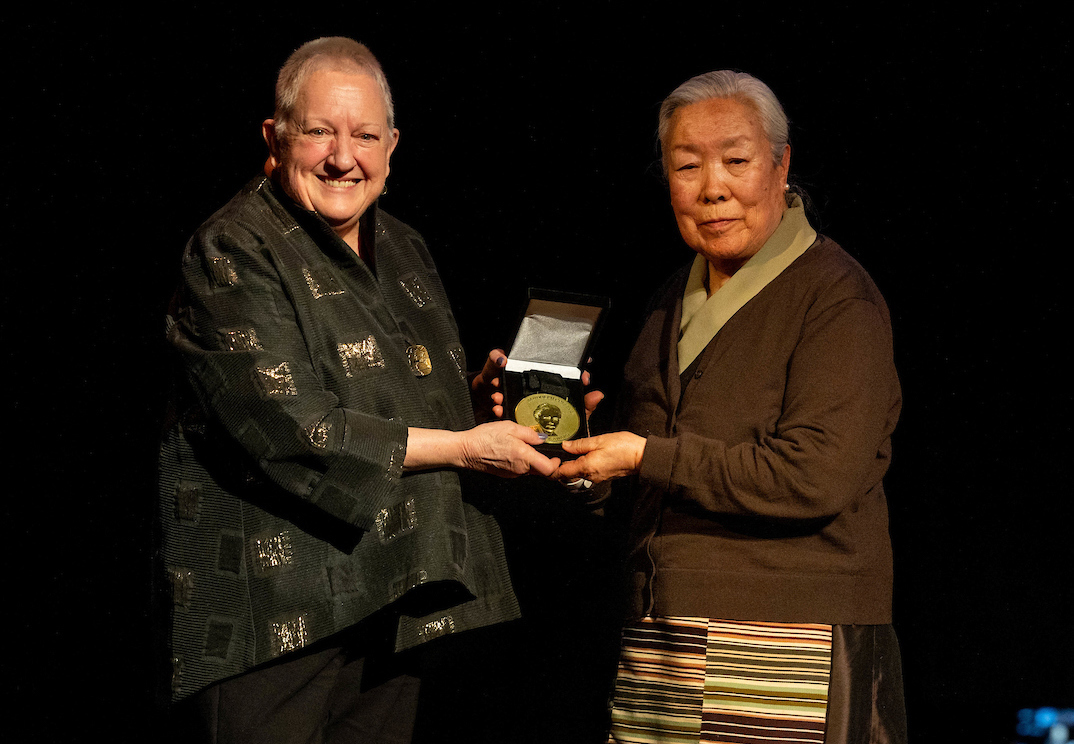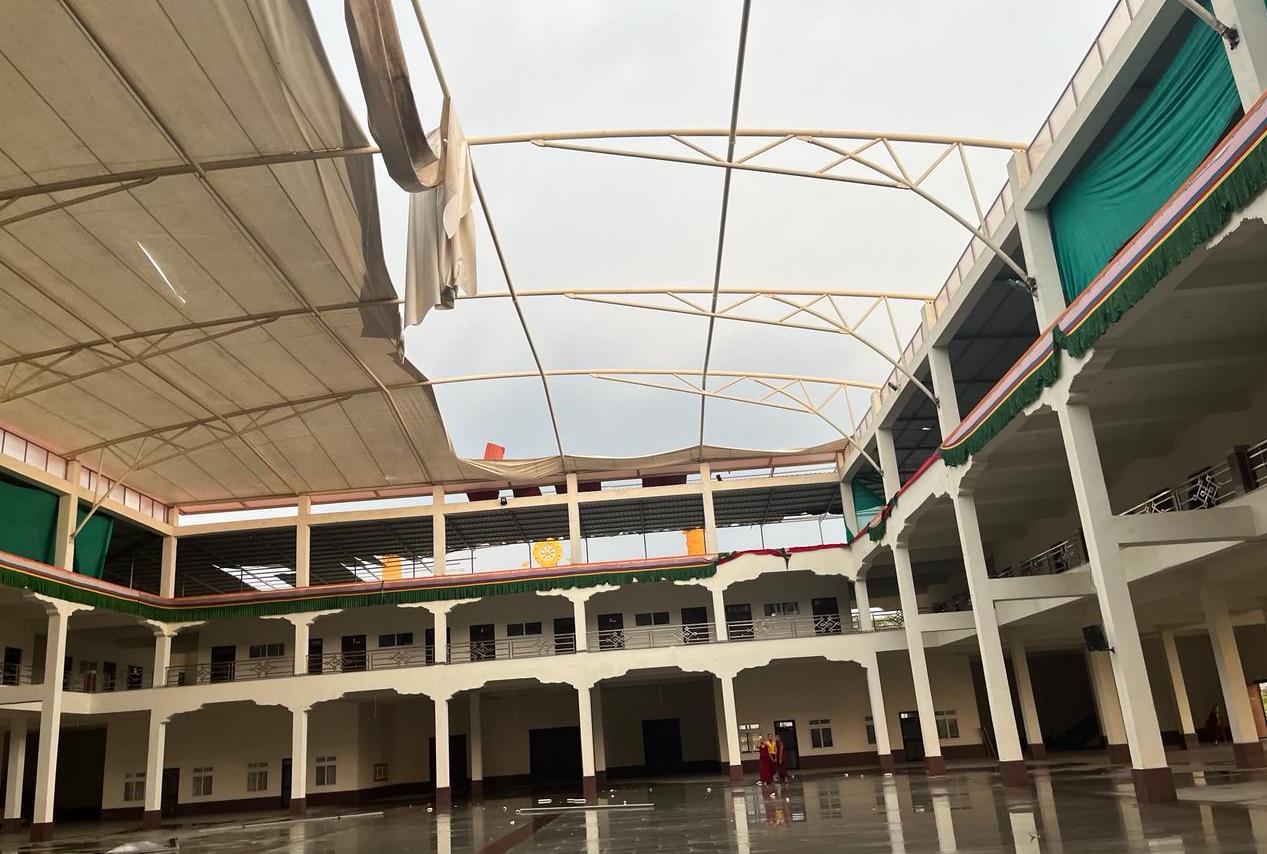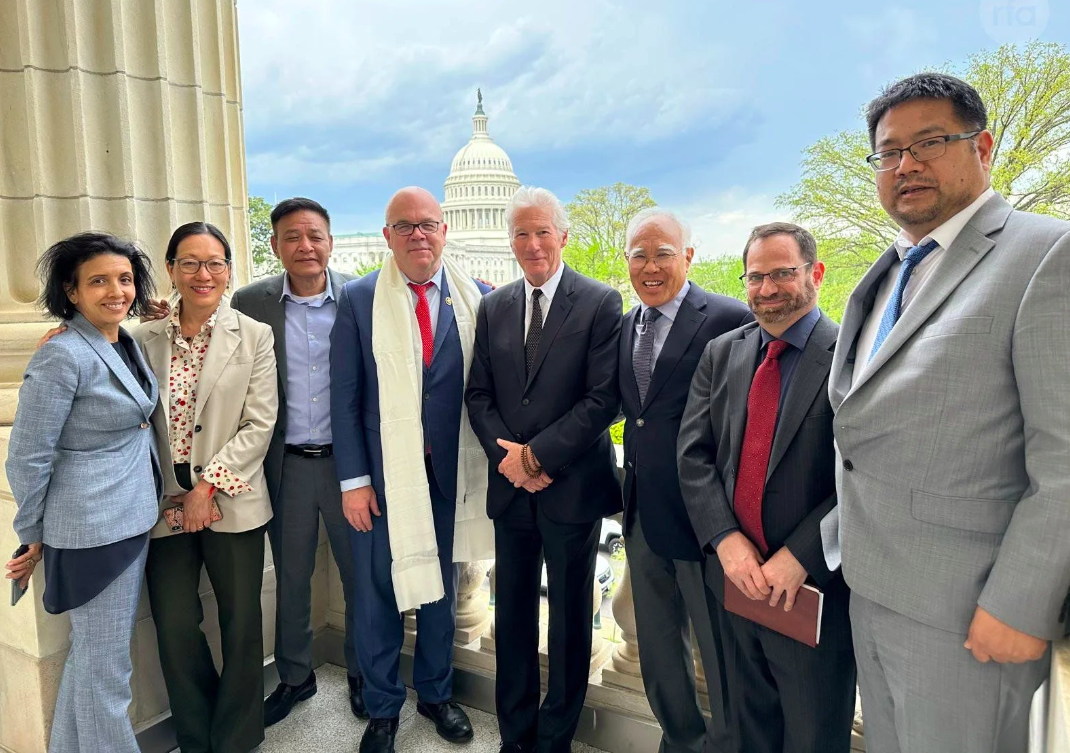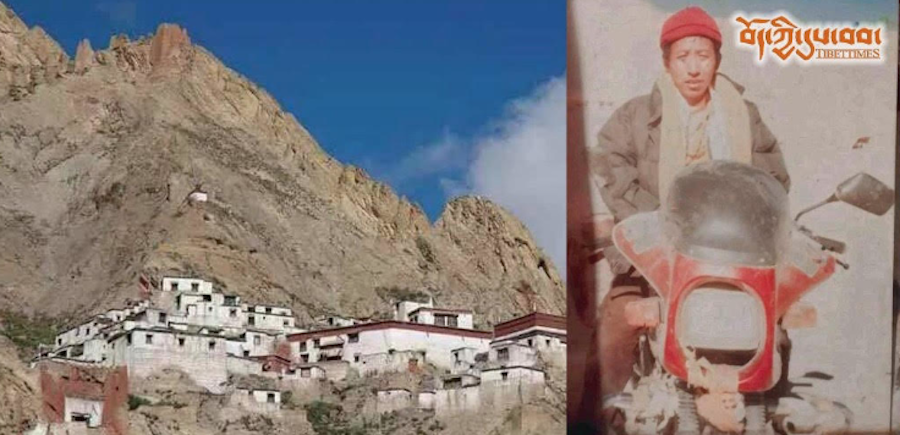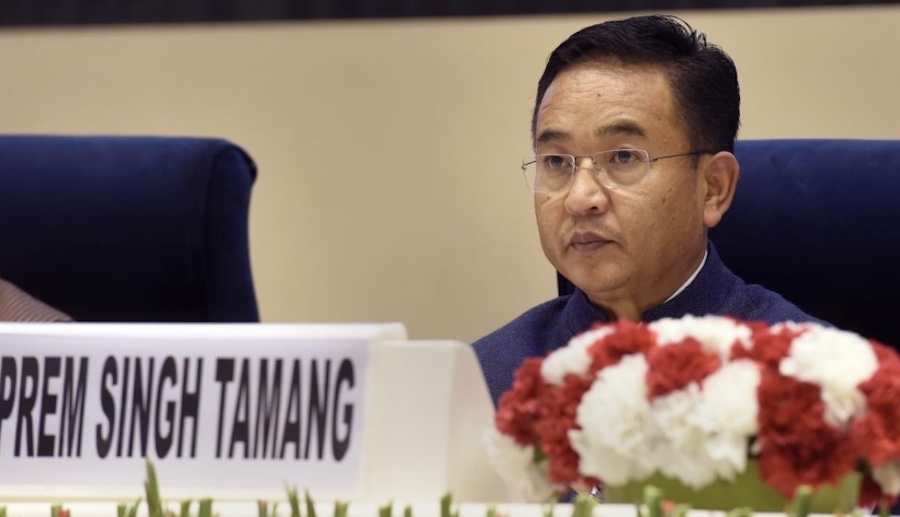CTA’s Response to Beijing’s Comments that His Holiness the Dalai Lama does not represent the Tibetan people:
The official Chinese claim that His Holiness the Dalai Lama “does not represent the Tibetan people” seems to be a simplistic remark aimed to undermine the popularity of the Tibetan Nobel Peace Laureate. Not only the Tibetans in and outside occupied Tibet regard His Holiness as their spiritual and temporal leader but also many Chinese through better awareness and information are showing respect for His Holiness and commend his efforts at seeking an amicable resolution of the issue of Tibet keeping into consideration the long-term interest of both the Tibetan and Chinese peoples. More importantly, because of the Tibetan people’s faith and trust in him, His Holiness the Dalai Lama also considers himself the free spokesperson for the Tibetan people.
History is witness to the fact that following Communist China’s invasion of Tibet in 1949, His Holiness the Dalai Lama was called upon to assume full political power by the Tibetan National Assembly. It was as a leader of the Tibetan people that His Holiness the Dalai Lama in 1954 went to Beijing for peace talks with Mao Zedong and other Chinese leaders, including Deng Xiaoping and Chou Enlai. So for the Chinese government authorities to now claim that His Holiness does not represent the Tibetan people falls flat even on past historical facts relating to Sino-Tibetan relations. As for the Tibetan people, wherever His Holiness the Dalai Lama lives, that place automatically becomes the seat of the Tibetan government headed by the Dalai Lama.
The distinctive feature of His Holiness the Dalai Lama as the leader of the Tibetan people is that in most parts of the world people shed blood and sacrifice their lives to get democratic rights from their leaders. In the case of the Tibetan cause His Holiness, who enjoys unqualified support from the people, has tried many times to give up all his legitimate powers to the Tibetan people and parliament but they in turn have been requesting him to continue being their undisputed leader!
Since coming into exile as early as in 1963, His Holiness presented a draft democratic constitution for Tibet that was followed by a number of reforms to democratise the Tibetan administrative set-up in exile. In 1992 His Holiness issued guidelines for future Tibetan polity wherein he announced that when the Tibetans, including himself, are able to return to Tibet with a certain degree of freedom, he will give up all his political authority. He has also expressed the hope that Tibet, comprising of the three traditional provinces of U-Tsang, Amdo and Kham, would be federal and democratic. Currently with the blessings of His Holiness the Dalai Lama the democratic administration in exile is headed by the Tibetan Kashag, which is led by the Kalon Tripa who is democratically elected by the Tibetan people. The Tibetan democratic set up, with an elected parliament in exile is admired by many governments, parliaments and people in the free world and even many Chinese admire the openness with which the Tibetan set up in exile under the leadership of His Holiness the Dalai Lama, headquartered in Dharamsala in northern India functions.
Another example to show how His Holiness represents the Tibetan people is when Tibetans held peaceful demonstrations all over Tibet last March, the key slogans included, “Long Live the Dalai Lama” and “We want return of the Dalai Lama”. The Tibetans inside Tibet raised these slogans even of being arrested and imprisoned.
It is encouraging to note that more and more Chinese, especially intellectuals, are refusing to succumb to the official Chinese propaganda. For example on 22 March 2008 in the wake of the demonstrations in Tibet, a group of Chinese intellectuals petitioned the Chinese leadership in Beijing. They urged the Chinese leaders to resolve the Tibet issue by entering into a dialogue with His Holiness the Dalai Lama. They also urged the Chinese government to “show proof” of their claim that the alleged riots that took place in Lhasa on 14 March 2008 “was organized, premeditated, and meticulously orchestrated by the Dalai clique.” The Chinese intellectuals said, “We hope that the government will show proof of this. In order to change the international community’s negative view and distrustful attitude, we also suggest that the government invite the United Nation’s Commission on Human Rights to carry out an independent investigation of the evidence, the course of the incident, the number of casualties, etc.” So far the Chinese government has yet to allow any independent international investigation in occupied Tibet.
The Institution of the Dalai Lama
If we start with the first Dalai Lama, Gyalwa Gendun Drub, the institution of the Dalai Lama is some 600 years old. If we start with the third Dalai Lama, Sonam Gyatso, on whom was conferred the title of the Dalai Lama by Altan Khan, the Tumed Mongol chieftain, the institution of the Dalai Lama is more than 450 years old. If we start with the Great Fifth Dalai Lama, Ngawang Lobsang Gyatso who combined in his person both spiritual and political authority of all Tibet in 1642, the institution of the Dalai Lama is exactly 367 years old as of 2009. There are very few governments in the world today, which can trace their institutional and legal origins so far back in history. The institution of the Dalai Lama has survived Ming, Manchu and Republican China and, in our considered opinion, is competing the marathon of longevity very well with Communist China.
China and CCP
Compared to this illustrious lineage, the Chinese Communist Party was founded in the early 1920’s. After a devastating civil war, amid famine, dislocation and the WW II, the Chinese Communist Party (CCP) emerged victorious to found the People’s Republic of China in 1949. This year on 1 October, the CCP gave itself a grand party to commemorate its 60 years in power. This is not to deny the achievement of the CCP. This achievement is made more remarkable by the fact that this was preceded by a prolonged period of warlordism. During the period of warlordism, Beijing or Nanjiang pretended to rule the whole of China and the whole of China pretended to be ruled from these two capitals. But the warlords were very much on their own, sometimes leading the two capitals by their noses. The 1949 achievement of a unified China has been squandered by the CCP in the past 60 years. Ideology took precedence over good governance, political campaigns over the economy and personality cult over collective decisions. A great nation was nearly reduced to its knees.
Then came Deng Xiaoping. He put the economic development over everything else. Thus came about the current transformation of China into the world’s fastest growing economy. However, this is being done within a legal vacuum. With no rule of law and institutional checks and balances, China’s economic miracle is a free-for-all. China’s economic miracle is being achieved at the expense of the welfare of the toiling masses. Their labours are exploited for personal gain by the growing collusion between party and government officials who provide protection to rapacious businessmen who provide bribes to their official protectors. Certainly, people are getting richer. However, the source of this wealth is based on this fundamental injustice of the current Chinese social system. Some commentators call this system a “predatory state.”
What the Tibetans Have Done in Exile
Against the background of the CCP’s diminishing legitimacy, the 14th Dalai Lama of Tibet has transformed the Dalai Lama institution into a global one. The Dalai Lama institution began as a Tibetan institution. The third Dalai Lama converted the whole of Mongolia to Tibetan Buddhism. The fourth Dalai Lama was born a Mongol. With these two events, the institution of the Dalai Lama became a Central Asian institution. The Great Fifth Dalai Lama made it into a Central Asian plus Himalayan institution with deep roots into Buddhist China. The Fourteenth Dalai Lama has made it into a global one. On top of this, His Holiness the Dalai Lama has set his people free. He has given them the gift of democracy and choice. This explains the vitality of the Tibetan exile community.
The Arrogance of Empire: When Rome Ruled the World
Jesus Christ said, “Render unto Ceasar what’s Ceasar’s. Render unto God what God’s” when asked whether it was right for ordinary people within the empire to pay taxes to Rome. Despite this Middle-Way Approach in dealing with political problems, Jesus was crucified, his followers persecuted throughout the empire. Many were thrown into lions’ dens. All these were done to suppress new ideas from affecting the stability of the empire. At the end of the day, the once mighty Roman Empire crumbled and Christianity spread throughout the world. The Pope, Christianity’s grandest lama, was installed in the Vatican in Rome. And Jesus Christ started on his mission of peace, goodwill and tolerance with just twelve disciples. In the end his teachings subdued an empire.
In term’s of endurance and relevance, no empire can compete with religion and the power of the human heart. This is what the Manchu emperor K’ang-si understood. In his message to the seventh Dalai Lama, he said, “The Dalai Lama is like a ray of sunshine, which is impossible for any one group of people to obscure. The ray of Buddhist faith will shine on everyone through him.” His Holiness the Dalai Lama’s teachings on the eternal message of the Buddha and the personal example he sets on how to lead individual lives has changed and touched the lives of millions across the globe. Most importantly, this message of hope, tolerance and goodwill is creeping into China through Chinese translations of his teachings. Ordinary Chinese are coming to India to attend his teachings. The final document of the Sino-Tibetan Conference, Finding Common Ground, held in Geneva from 6-8 August this year declared, “The undeniable right of His Holiness the Dalai Lama to return to his homeland must be respected.” The document also recommended to the Central Tibetan Administration “to create favourable conditions for His Holiness the Dalai Lama to promote his values to the Chinese community as a contribution to the renewal of spiritual values amongst the Chinese people.”
The power of religion was poignantly shown in 2006. That year His Holiness the Dalai Lama gave a Kalachakra teaching in Amravati in south India. It was attended by Tibetans and Buddhists from all over the world, including more than 8,000 Tibetans from Tibet and about 250 Chinese from the Mainland. His Holiness the Dalai Lama urged the Tibetans from Tibet not to wear clothes trimmed with animal skins and asked those gathered on the occasion to pass this message to Tibetans in Tibet. Within a week of this request, Tibetans in all parts of Tibet made bonfires of clothes trimmed with animal skins. This is a measure of Tibetans’ devotion to His Holiness the Dalai Lama. Even if this is not considered proof positive that His Holiness the Dalai Lama is the legitimate representative of the Tibetan people, then the simple way to resolve the issue is for the Chinese authorities to conduct a plebiscite amongst the Tibetan people to let them decide who their legitimate leader is.
The above official response of the Central Tibetan Administration was published on the official website of the Central Tibetan Administration





